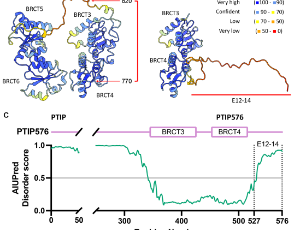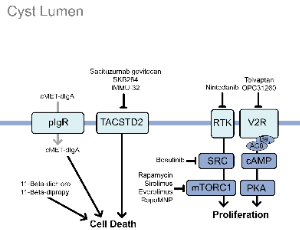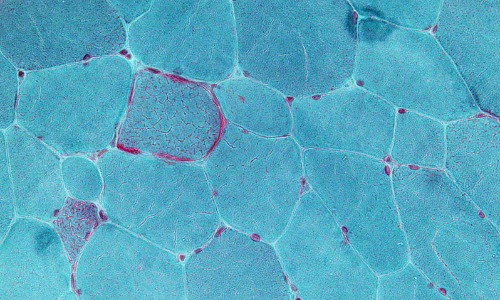Loading
New Articles
Articles published in this issue are Open Access and licensed under Creative Commons Attribution License (CC BY NC) where the readers can reuse, download, distribute the article in whole or part by mentioning proper credits to the authors.
Articles in Press
Recommended Articles
Flow Cytometric Characterization of Accidental Cell Death Highlights Connections to Regulated Cell Death
Damage-Associated Molecular Patterns (DAMPs) are known by their nature to cause inflammatory responses in numerous disease states from cancer, trauma to age related diseases (e.g. atherosclerosis, Alzheimer’s and Parkinson’s diseases), these molecules are released by cells undergoing cell death.
Emerging Role of TRPML1 Mucolipin Endolysosomal Channel in Cancer
The transient receptor potential mucolipin 1 (TRPML1) is an endolysosomal channel belonging to the TRP family. Clinically, mutations of TRPML1 have been responsible for a severe lysosomal storage disorder called mucolipidosis type IV.
Manipulating Oxidative Stress Following Ionizing Radiation
It is now well accepted that the ionizing radiation-generated reactive oxygen species (ROS), that constitute ~2/3 of the effects of external beam radiation, do not only produce direct tumor cell death, but also affect the surrounding microenvironment. Moreover, this indirect effect of radiation may result in systemic effects, specifically the initiation of an inflammatory response.
Activation of NLRP3 Inflammosome by N4-Acetyl Cytidine and Its Consequences
N4-acetylcytidine (N4A) is an organic compound and a metabolite of transferrable ribonucleic acid. Its molecular formula is C11H15N3O6. Earlier studies suggest that N4A was mainly found on tRNA and 18S rRNA, while recent studies have shown that there is also a large amount of N4A on mRNA, whose abundance is not even lower than the m7G cap modification carried by mRNA.
Cyclic Nucleotide Signaling Pathways in Apicomplexan Parasites Provide a Valuable Source for Novel Drug Targets
Malaria is one of the most important disabling human, tropical disease caused by different Plasmodium species, which are protozoan parasites belonging to the Apicomplexa. The Apicomplexan parasites have a plastid like structure the “apicoplast” and comprise the genera Plasmodium, Toxoplasma and Cryptosporidium causing malaria, toxoplasmosis, and cryptosporidiosis.
COVID-19 Clinical Research
While the global COVID-19 pandemic has challenged the entire humanity and health systems, it also triggered researchers to urgently perform clinical trials to assess the safety and efficacy of many agents and modalities to combat COVID-19. As of April 22, over 650 clinical studies have been registered both in USA and internationally. Results from these studies are also coming at a brisk pace in this unprecedented emergency.
Ubiquitin Proteasome System Regulates Biological Particles Interaction in Particle Disease (PD) via NF-κB Signaling
Considering their outstanding mechanical character, it is inevitable to utilize titanium and titanium composite for biomedical engineering application [1-6]. However, the particles releasing from these bulks or composites of biomaterials after long term implanting in human body will cause cell apoptosis or cell death, inflammation, bone
Prospective Evaluation of Effect of Metformin on Activation of AMP-activated Protein Kinase (AMPK) and Disease Control in a Sub-group Analysis of Patients with GI Malignancies
Observational studies have demonstrated association of metformin with reduced cancer incidence and mortality in multiple cancer types, including gastrointestinal (GI) malignancies. Anti-neoplastic effects of metformin are believed through many mechanisms including activation of AMP-activated protein kinase, which controls mammalian target of rapamycin (mTOR) growth regulatory pathway.
Novel Hippocampal Interaction between Spexin and Corticotropin Releasing Factor
Nowadays, people pay more and more attention to homeostatic regulation, which is the detrimental effect of stress on physiological and psychological well-being and cannot be ignored. The public perception of anxiety has been associated with the hypothalamic hormones, because of the pivotal role of the hypothalamic-pituitaryadrenal axis to promote the pituitary-adrenal functions and endocrine responses.
DNA Nanotechnology Engineered Vesicle for Mimicking Biomolecular Signaling
Bio-inspired strategy is kind of interesting to fabricate devices and perform dynamic operations [1]. Various devices have been made, such as airplane, radar and submarine. In life science, as the fundamental entity, million years’ evolution enables cell becomes the most successful functionality.
The Effect of Glucocorticoids on Angiogenesis in the Treatment of Solid Tumors
Glucocorticoids (GCs) are defined by their role in maintaining glucose homeostasis and natural GCs are a class of corticosteroids secreted by the adrenal cortex. Cortisol is the most important natural GC in humans. Cellular cortisol levels are regulated by the tissue-specific metabolic enzymes 11β-hydroxysteroid dehydrogenase 1 and 2 (11β-HSD 1 and 2); 11β-HSD 1 converts inactive cortisone to active cortisol, while 11β-HSD 2 has the opposite function.
Distinct Phosphorylation of STAT1 Confers Distinct DNA Binding and Gene-regulatory Properties
Signal transducer and activator of transcription 1 (STAT1) protein plays a pivotal role in various biological processes especially the regulation of innate and adaptive immune responses. Phosphorylation represents a key step in the activation of STAT1 and its transcriptional outcome. Binding of various extracellular ligands to their specific cell-surface receptors activates different phosphorylation of STAT1 followed by a distinct change of gene expression patterns.
Role of Sphingolipid Signaling in Glomerular Diseases: Focus on DKD and FSGS
Being a sophisticated and highly organized living system, mammals harbor a large number of biomolecular machineries which represent a dynamic and complex network of interconnections responsible for the effective operation, development and survivability of their body cells. Sphingolipids are a special class of lipids in eukaryotic cells, which have recently gained the attention of researchers because of their involvement in several fundamental processes of living cells, including proliferation
Metabolic Syndrome is an Important Cornerstone in the Health-disease Line and Pathological Organ Interaction
Today, metabolic syndrome (MS) has been regarded as a very important disease due to its complex multifactorial etiology and damage to different organs. In general, obesity, dyslipidemia, hypertension, hyperglycemia, and insulin resistance are the main metabolic abnormalities of the MS. Compared with the others; in particular, insulin resistance and central obesity are considered the main causes in the pathogenesis
Machine Learning for Healthcare: Emerging Challenges and Opportunities in Disease Diagnosis
Diagnosis is a process that identifies, explains, or establishes the individual’s disease from its symptoms and signs. Early and precise diagnosis is crucial since it influences the efficacy of treatment and avoids longterm complications for the infected person. Further, in the case of infectious diseases, undiagnosed patients can transmit the disease to a healthy population unknowingly. Besides, most of the diseases evolve with the time that significantly affects the clinical outcomes.
Kv1.3 Potassium Channels: Promising Therapeutic Targets in Hematological Malignancies
Voltage-gated Kv1.3 potassium channels control the membrane potential, cellular activation and cell death. Kv1.3 channels have been extensively studied in autoimmune disorders and are promising drug targets for the treatment of solid cancer.
Is Citrate A Critical Signal in Immunity and Inflammation?
When immune cells are activated, they undergo metabolic change in order to have sufficient energy to function effectively. The Krebs cycle is one of the most important pathways involved in this response and citrate, a critical component of this pathway, regulates carbohydrate and lipid metabolism.
Using Mitochondrial Trifunctional Protein Deficiency to Understand Maternal Health
Fatty acid oxidation disorders unfortunately can result in the sudden unexplained death of infants. Mitochondrial trifunctional protein (MTP) deficiency is one such disease where long-chain fatty acids cannot be fully oxidized through beta-oxidation which, can lead to cardiac arrythmias in an infant.
Dendorbium Nobile Lindl. Alkaloids Suppress NF-κB and NLRP3 Signaling Pathways to Attenuate Lipopolysaccharide-induced Neuroinflammation
The important immune cells in the brain are called microglia acting as the central junction between neuroinflammation and neurodegenerative diseases. In patients of cognitive disorders and Alzheimer’s disease (AD) animal models, amoebic morphology and inflammatory pathways are activated to release numerous cells in the inflammatory factors by active microglia.
Galectin 3 and Glial Cells of the CNS: A Fruitful Crosstalk with Remyelinating Potential
Galectin-3 (Gal-3), the only chimera-like galectin, has three structural domains: (a) the NH2 terminal domain containing serine phosphorylation, important for nuclear localization, secretion and oligomerization; (b) a sequence susceptible to metalloprotease (MMP) cleavage; and (c) a C-terminal domain containing the carbohydrate recognition domain (CRD) and an anti-death motif.






